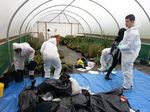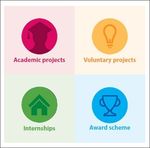EAUC Living Labs Project
20th July 2016
We recently launched our Living Labs Research. It was triggered by strong evidence and positive feedback from institutions with Living Lab projects globally.
A Living Lab (LL) is a concept which is understood and applied in several different ways within the tertiary education sector. At its heart, LL aims to establish partnerships or programmes which connect academic activities of the institution (i.e. learning & teaching, and academic research) with non-academic partners. These partners can be university internal operations or estates departments, local communities, businesses, charities and other organisations. Among the plethora of benefits are:
• Richer practice-based learning experiences for students that improve professional skills, employability, student retention, and student satisfaction
• Knowledge-transfer for sustainable change: benefits of realistic and practicable research to internal and/or external partners
• Stronger partnerships between academics and internal estates staff, as well as external partners.
The potential is transformational. Living Labs promise the opportunity of applied learning and employability skills for students, problem-solving for campus managers, a rich and real-world learning experience for academics and a redefined student experience and new levels of student retention and satisfaction for managers.
Recognising this, the EAUC has invested into in-depth, world-leading research. Living Labs are at the heart of the new EAUC 2021 strategy and provide the practical means to make sustainability not only ‘good business’ but the new norm in how we all work.
Start by reading our overview of this research here:
Living Labs Brief: What are they? And why are they crucial for post-16 education?
Then
If you want to develop your understanding of where the Living Lab sits within a post-16 institution read:
A Revolution for Post-16 Education - Part 1: A Case for the Living Lab
Or
If you want to understand the academic research behind the Living Lab concept read:
A Revolution for Post-16 Education - Part 2: How do Living Labs Work?
The EAUC is delighted to invite our members to engage with and learn more about this exciting project. If you would like to join the Community of Practice on Living Labs, please click
here.
To find out more or discuss the opportunities please contact EAUC:
[email protected].








 Except where otherwise stated, content on this site is
licensed under a Creative Commons Attribution 3.0 License.
Except where otherwise stated, content on this site is
licensed under a Creative Commons Attribution 3.0 License.
